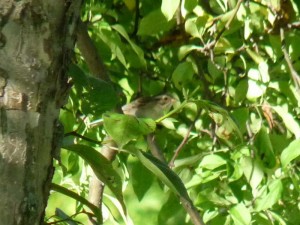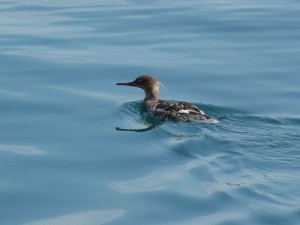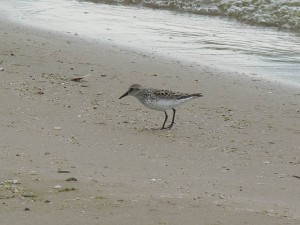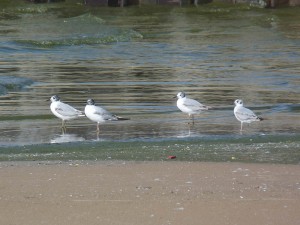Part one of a six part series on my trip to the west and southwest in April, 2014
On April 15 I set out on a two week birding tour of the western and southwestern United States. Karen Mansfield was my traveling and birding partner for the first ten days of the trip. Karen was planning on hiking the Continental Divide Trail this spring and summer and I offered to drive her to Lordsburg, New Mexico. From there she would take a shuttle to the trailhead in New Mexico at the Mexican border to start her hike. The Continental Divide Trail, or CDT, follows (approximately) the Continental Divide and runs from the United States/Mexican border in the south to the Canadian/United States border in the north. Karen is a passionate hiker and has hiked the Appalachian and Pacific Crest trails. Completing the CDT would make her a Triple Crowner, a highly coveted (and rarely achieved) feat in the hiking world. After I offered to take Karen I said to myself why not take a couple weeks off and go birding? My job would end in early April and I could afford to take some time off and have a birding adventure. So I pulled out a map and started thinking and plotting and came up with the following plan: Start by looking for Lesser Prairie-Chickens on the Cimarron National Grasslands in southwestern Kansas. I still needed Lesser Prairie-Chicken for a lifer and Kansas has a blind open to the public on the Cimarron for viewing them. After that, drive to the Gunnison valley in western Colorado to look for Gunnison Sage-Grouse, another lifer. From there drive south through the Colorado and New Mexico Rocky Mountains, then bird along the Rio Grande River in central and southern New Mexico. Head west to Arizona and spend a few days hiking and birding the Chiricahuas. After dropping Karen off start back east through Texas, checking Lost Maples State Park, and ending up on the Upper Texas Coast to catch spring migration. Finally, bird the Atchafalaya National Wildlife Refuge in Louisiana. This is an account of my trip.
After a long drive from Chicago and a night in Garden City, Kansas, Karen and I woke up early on the morning of Wednesday, April 16 and started out for the Lesser Prairie-Chicken viewing blind outside of Elkhart to, hopefully, view displaying Lesser Prairie-Chickens. This is one of the few blinds on public lands for viewing this species. A few weeks earlier I reached out to a Forest Service official (USDA/Forest Service manages the Cimarron) about looking for the birds there. She told me that 1-3 Lesser Prairie-Chickens were using the lek at the blind outside of Elkhart. One to three didn’t sound like a lot of birds but we only needed to see one bird, and I expected we’d see at least one bird. If ever there was a gimme in the birding world its lekking grouse I thought. Chicagoan and Kansas native Sebastian Patti also gave me the lowdown on looking for the birds, as well as birding the Cimarron in general.
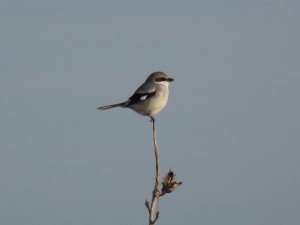
Loggerhead Shrike (click to see the larger version)
The standard protocol for viewing lekking grouse from a blind is to get to the blind before sunrise, keep quiet while in the blind, and wait for the birds to disperse before leaving the blind. We did the first 2 things. When the sun started to come up the dawn chorus of birds of the sand-sage prairie began – Western Meadowlarks, Grasshopper Sparrows, and Vesper Sparrows. A Short-eared Owl also made an appearance. No prairie-chickens though. When the sun broke the horizon, the dawn chorus was going strong but still no sign of any prairie-chickens. Hmm. I thought they would have started up by now. About a half an hour after sunrise we still weren’t seeing any prairie-chickens, so we threw in the towel and left, disappointed and a bit puzzled. Did we get to the blind too late? Did we make too much noise? Did we leave too early? After the dip we drove over to the Forest Service office in Elkhart and talked to a USDA official who told us that 1-3 Lesser Prairie-Chickens were using that particular lek (this must have been the same person I talked to via e-mail a few weeks earlier.) She also told us that the drought had reduced prairie-chicken numbers on the Cimarron, along with other animals, and that the prairie-chickens were starting to abandon this lek for another one. Maybe not seeing the birds wasn’t our fault after all and there were just no Lesser Prairie-Chickens using this lek anymore. Not an auspicious beginning to our trip but this is birding and nothing is guaranteed.
After not seeing the prairie-chickens we drove around the Cimarron and explored the Kansas countryside near the Colorado border. Western Meadowlarks, Horned Larks, and Vesper Sparrows were the most common birds. We also had a few singing Cassin’s Sparrows, always nice to hear, and our only Cassin’s Sparrows for the trip. Flocks of noisy Great-tailed Grackles were all around Elkhart. North of the Cimarron River we added Say’s Phoebe, Rock Wren, and a Lark Bunting. Mountain Plovers are supposed to be in the area but we didn’t see any. Near the Colorado border we had a group of 4 or 5 Burrowing Owls in a prairie-dog town.
We left Kansas late in the morning and started heading west into Colorado for the next leg of the trip, looking for Gunnison Sage-Grouse.

